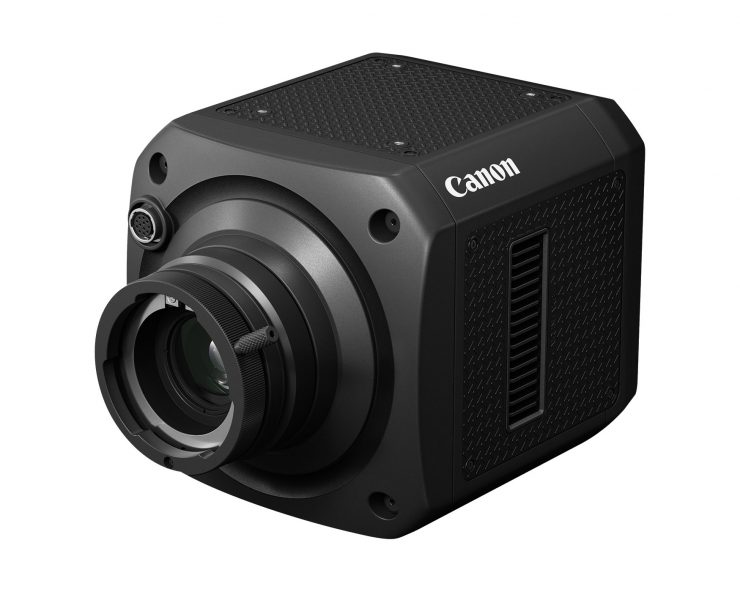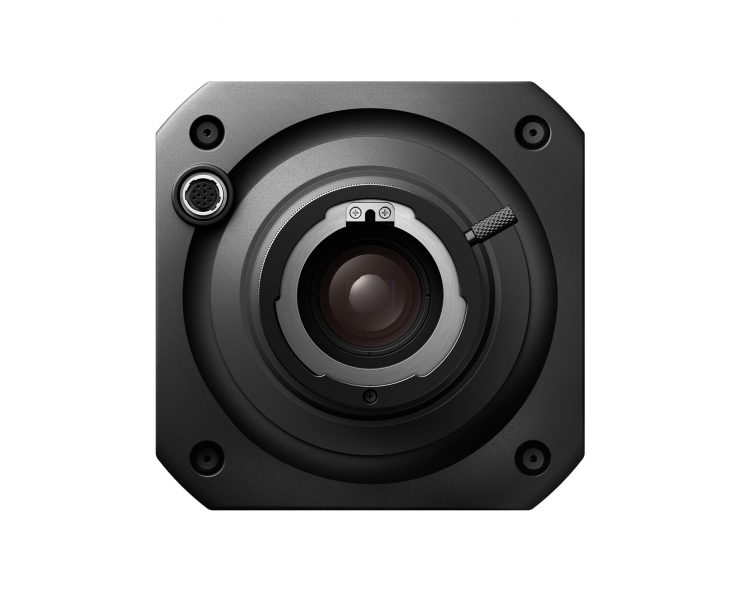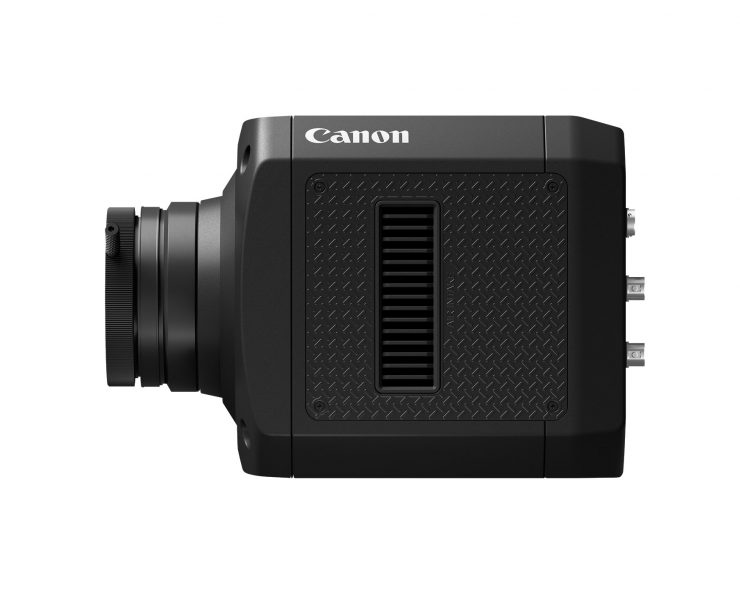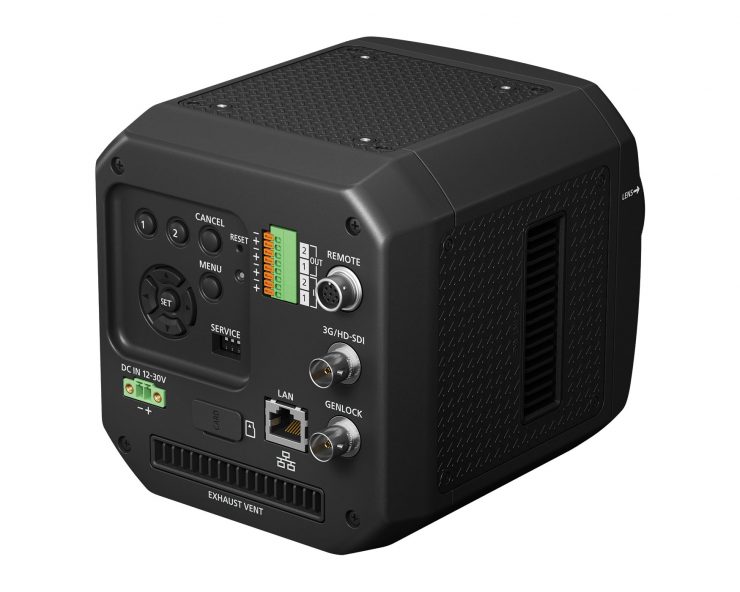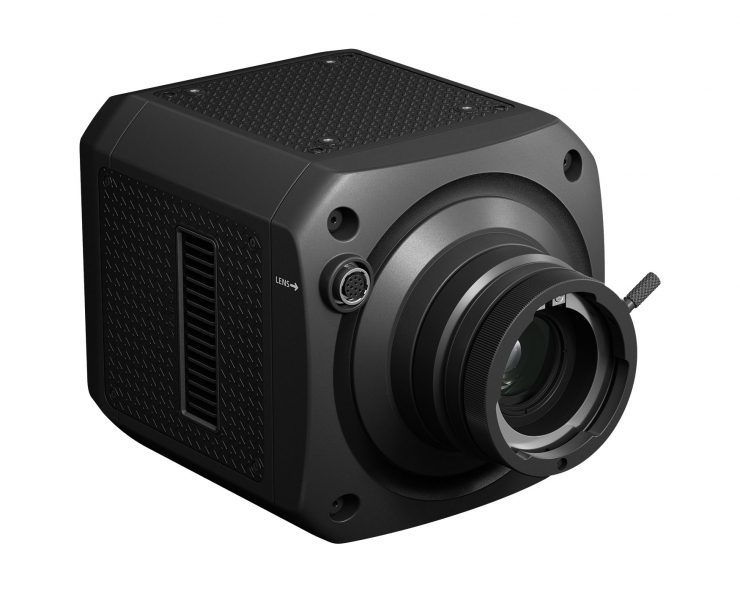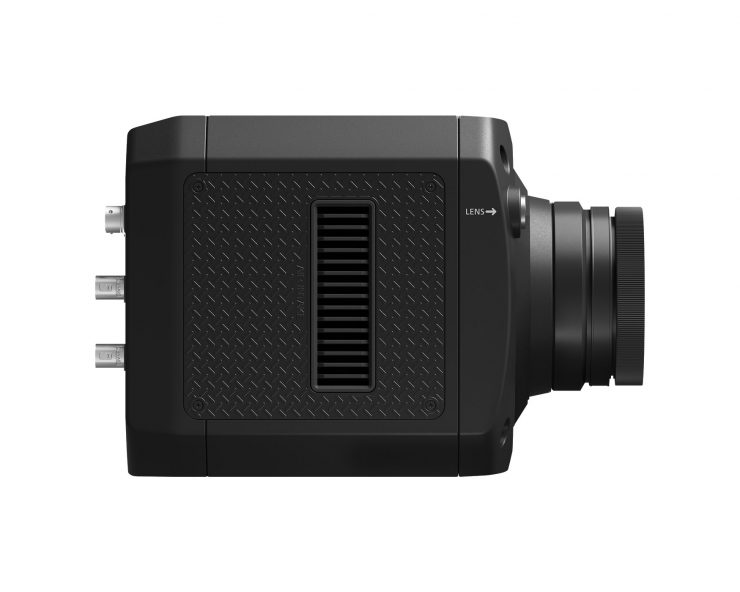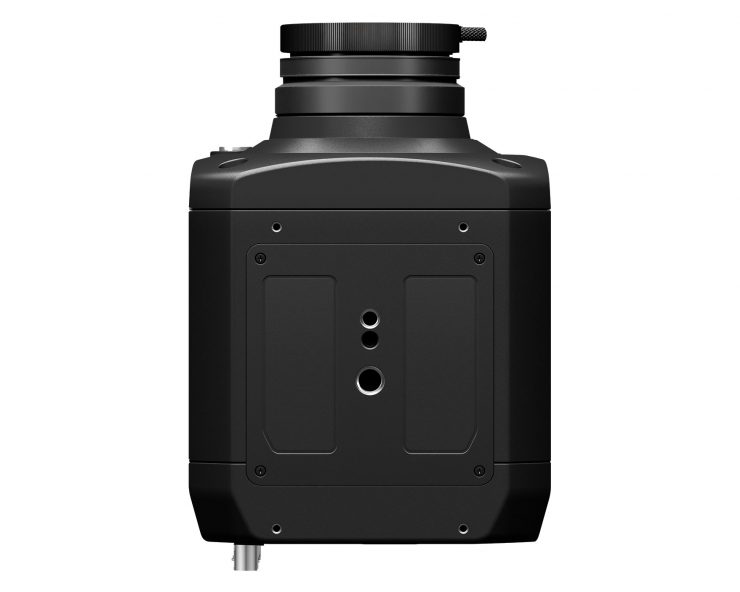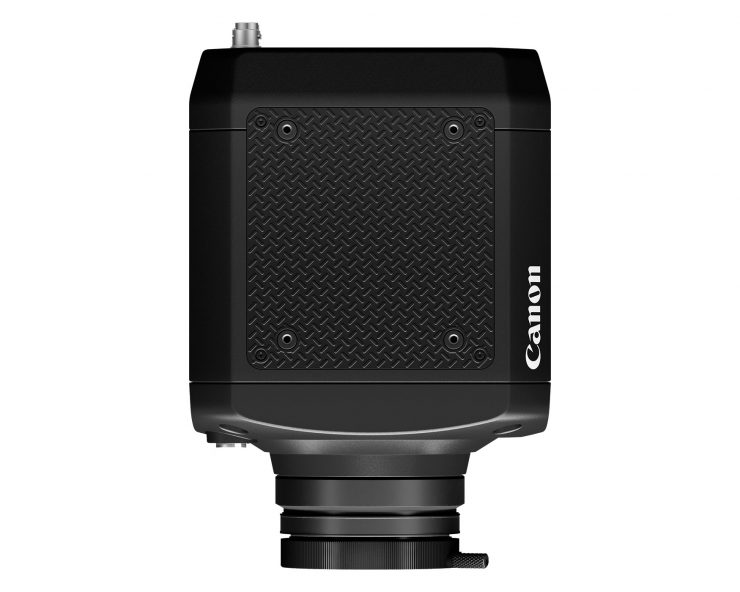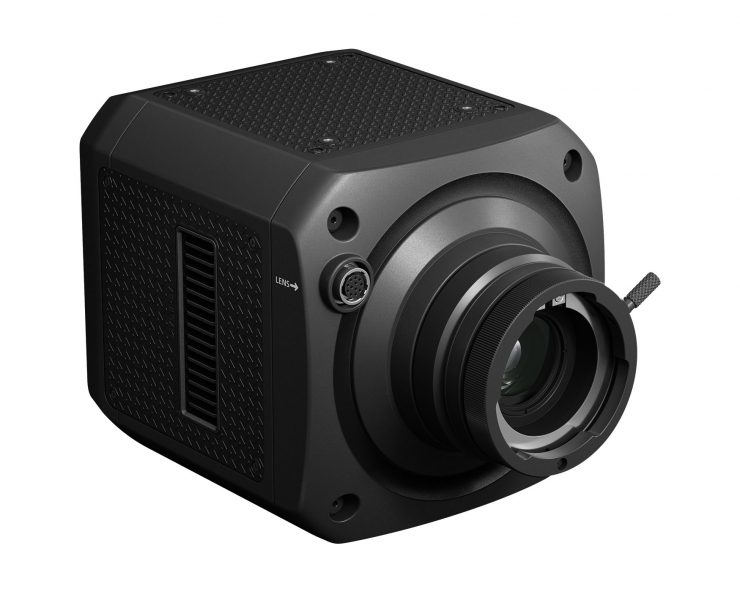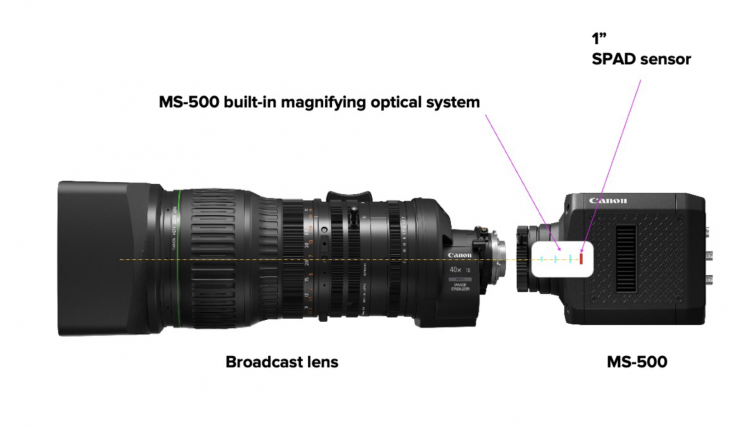Canon has officially announced the MS-500, the world’s first ultra-high-sensitivity interchangeable-lens SPAD sensor camera. The MS-500 was initially shown at NAB 2023 as a development project.
Not only is the MS-500 being touted as the world’s first ultra-high-sensitivity camera equipped with a SPAD sensor but it also features the world’s highest pixel count on its 1” Single Photon Avalanche Diode (SPAD) sensor of 3.2 megapixels.
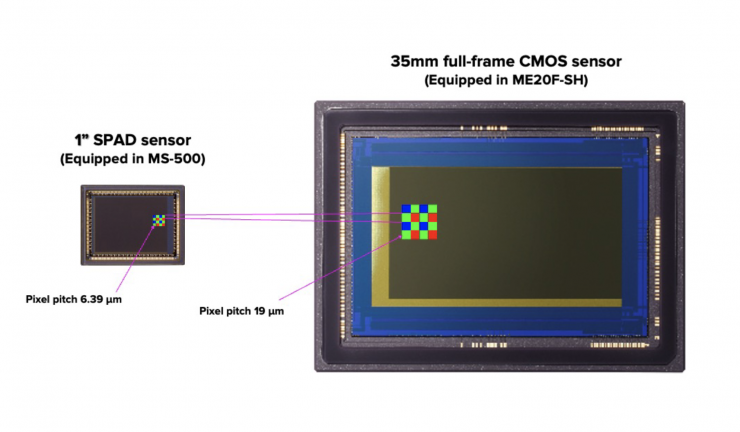
With this large pixel number achieved by minimizing pixel pitches to approx. 6.39 μm, the MS-500 can capture Full HD high-resolution color images with a small sensor.
How does a SPAD sensor work?
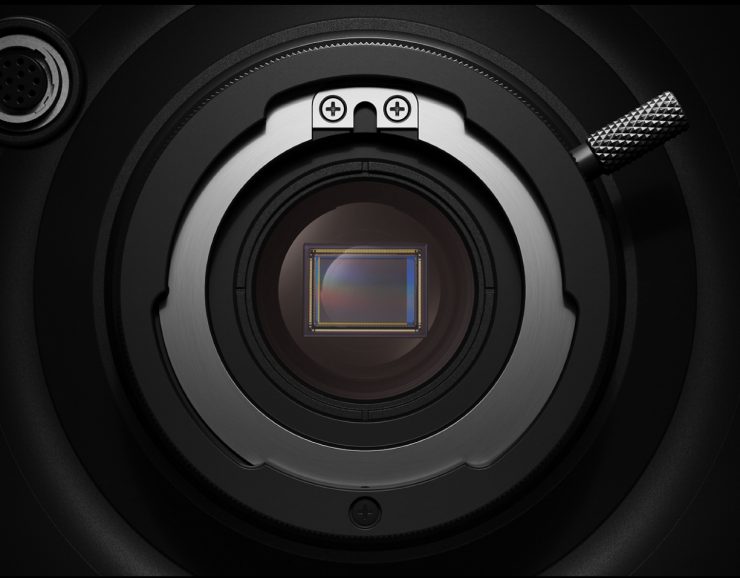
A SPAD (Single Photon Avalanche Diode) sensor works in a completely different way to a CMOS sensor. It uses a technology known as photon counting, which counts light particles (photons) that enter a pixel. When incoming photons are converted to an electric charge, they are amplified approximately one million times and extracted as digital signals, making detecting even small amounts of light possible.
Conventional CMOS sensors accumulate electrons generated by light as electric charges and convert them into digital signals and read them out. With the SPAD sensor, when even one photon reaches a pixel and generates an electron the sensor instantaneously multiplies the electron by approximately 1 million times by the electron avalanche effect and outputs it as an electrical pulse signal. By counting the number of these pulses, the amount of incident light can be detected as a digital value.
This allows the SPAD sensor to detect light more accurately with less noise compared to CMOS sensors, which accumulate light particles as analog signals. The analog signals must be converted to digital before being read out, resulting in noise contamination.
One of the key advantages of SPAD sensors is that every single one of these photons is digitally counted, which in turn, prohibits the introduction of additional noise during signal readout. This enables clear color video shooting even under a 0.001 lux low-light environment. Canon claims that when it is combined with ultra-telephoto broadcast lenses, it may be possible to capture clear color videos of subjects at a distance of several miles, even at night.
What was the MS-500 primarily designed for?
The MS-500 was designed primarily for use in surveillance applications such as areas with extremely high-security levels like seaports, public infrastructure facilities, and national borders. Although there is no reason why it couldn’t also be adapted to work on wildlife shoots and other specialist projects.
The new MS-500 joins the ME20 and ML Series in Canon’s ultra-high-sensitivity camera lineup.
What mount does it use?
The MS-500 camera uses an industry-standard B4 bayonet lens mount which means it can natively use a wide array of 2/3-inch broadcast lenses.
Infrared Shooting (Night Mode)

With infrared shooting in Night Mode, the MS-500 camera’s filter on the front of the SPAD sensor switches from an infrared cut filter to an infrared transmission filter, increasing the amount of infrared light that reaches the sensor. With the camera’s Auto White Balance feature (AWB), the typical red image shot you get when shooting in infrared is automatically color-corrected with natural colors. The Night Mode Color Level feature further boosts AWB with 14 levels of redness correction to finely adjust the video according to the scene.
Inputs & Outputs
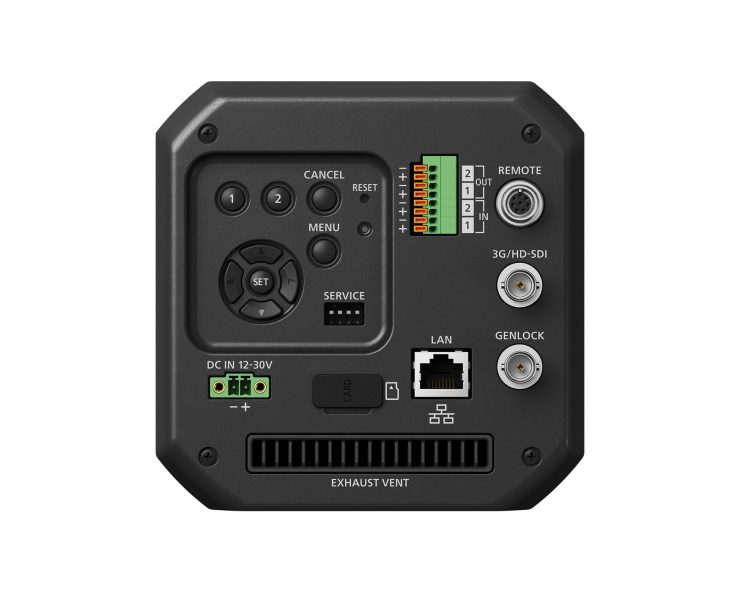
The MS-500 features the following inputs and outputs:
- RS-422 serial remote control interface
- 3G SDI
- Genlock
- 12-30V DC In
- Service Port
- LAN
The MS-500 is equipped with two serial communication protocols for camera control, Pelco-D, and NU. Both protocols enable remote control and operation from an external device. By connecting a cable between the serial communication terminal, a pan-tilt head that supports Pelco-D or NU7 and the REMOTE terminal on the rear of MS-500, it is possible to remotely control and operate the lens, camera and pan-tilt head from a compatible controller. Remote operation allows for more subtle manipulations and fine adjustments when shooting at a long distance with an ultra-telephoto lens with a very narrow-angle of view, rather than operating directly with a camera button or lens ring.
Other features
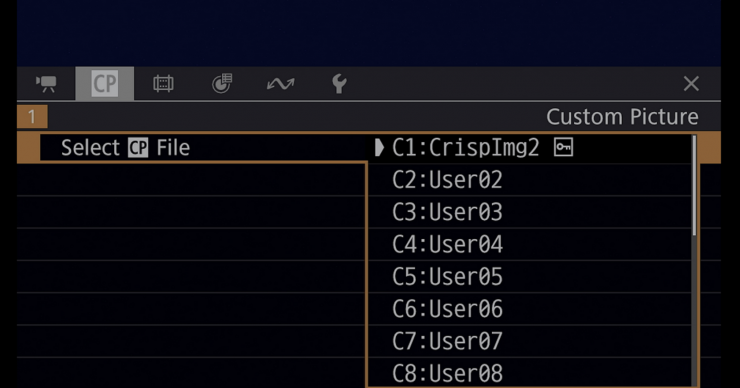
Canon has included custom picture functions to help improve visibility, including noise and haze reduction.
The effect of noise and atmospheric turbulence, particularly in dark environments, leads to issues with video resolution, especially when it comes to long-range surveillance applications. To help negate this from occurring, you can use the CrispImg custom picture preset mode that is claimed to optimize resolution and contrast while suppressing image noise. Users can also create their own custom picture profiles to adjust and save image quality settings. The MS-500 camera also includes Haze Compensation, and Smart Shade Control features that are said to help reduce the effects of haze and mist while automatically adjusting contrast and image brightness.
Price & Availability
The Canon MS-500 SPAD Sensor Camera is scheduled to be available in September 2023 for $25,200 USD.

